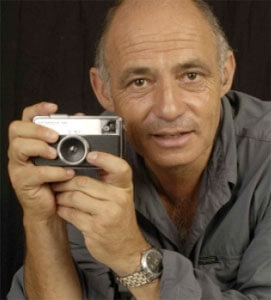Born in Buzançais, France, in 1955, Pascal Maitre studied psychology before beginning a career in photojournalism in 1979. His numerous assignments have taken him all over the Earth, from Afghanistan to South America. His books,
In the Heart of Africa and
Madagascar: Travels in a World Apart, gather images from 15 years of work in Africa.
His photographs have been published in publications around the world, including
GEO,
Le Figaro Magazine,
Newsweek,
Life, and many others. His photographs first appeared in
National Geographic in a September 2005 article on oil in Africa.
Maitre is based in Paris, France.
Source: National Geographic
After studying psychology, he starts his carrier as photojournalist with the
Jeune Afrique press group. In 1984 he joins the
Gamma staff and then in 1989, he cofounds the
Odyssey Images agency. From 1994 to 2018, he was a member of
Cosmos Agency. He is now represented by
MYOP.
He has worked with many prestigious international magazines including, the
Figaro Magazine,
Geo,
Paris Match,
Stern,
Brigitt and the
National Geographic.
In 2000, he published
My Africa, a book that compiles 15 years of his work on this continent, with
Aperture in the USA and Geo in Germany. In September 2001, the French version is released by Vents de Sable editions. In 2012 he publishes
Amazing Africa, a compilation of 30 years of his work on Africa, with edition Lammerhuber and Unesco.
Pascal Maitre has worked in over 40 countries in Africa, while tackling many different aspects, men and their way of life, politics, conflicts, tradition or the environement.
He received numerous awards, including some
World Press Photo awards, the AFD/Polka Prize for the Best Photo Report Project, the VISA D’Or 'Honneur for Lifetime Achievement'.
He had eight personal exhibitions at
Visa pour l'Image in Perpignan, two personal exhibitions at the
Maison Européenne de la Photographie in Paris and a personal exhibition about his work at The Arche de la Défense in Paris.
Source: MYOP
